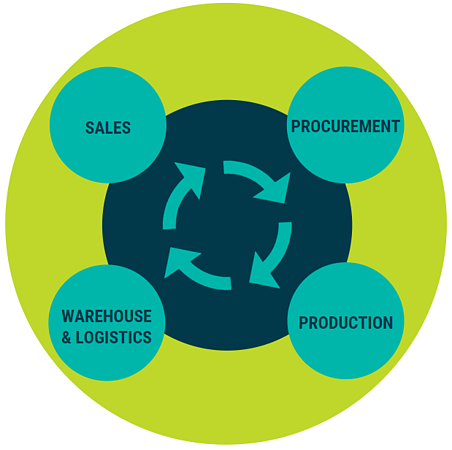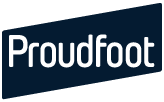Procurement For Customer Expectations
Delivering the best possible quality to customers with the minimum possible input costs has always presented executives with a difficult balancing act.
But the growing importance placed on quality and freshness in buying decisions and overall rising consumer expectations are creating more pressure than ever to source the best raw materials without increasing costs. To make things even harder on buyers, most companies operate with very lean procurement departments.
For a relatively small team with limited bandwidth, it’s a big enough task just to manage the basic procurement functions week to week. Lack of time and resources inevitably results in a less granular focus across categories and on individual items. This doesn’t only lead to missed opportunities at the point of execution.
It creates a broader issue when leadership can’t find time to fully assess performance and leverage that insight to inform and enhance sourcing strategy.
Despite all of this, when there’s uncertainty around the direction of the global economy, procurement is often the first department to get handed down the directive for a substantial cost take out. For procurement teams that have already looked everywhere for savings, how can they reduce costs even more without sacrificing quality and freshness of raw materials?
One area that is often overlooked is indirect spend. For a large company, thousands of items can go into the indirect spend categories, and most teams find it impractical, if not impossible, to give each item sufficient attention throughout the year.
Of course, indirect spend is no longer just made up of relatively price-static items like paper clips or envelopes. Most indirect spend line-items go down in price over time and hold room for price negotiation, and the savings on each individual item can add up quickly.
While it can be a time and labor-intensive project to give to your internal team, bringing in outside resources for a concentrated effort can identify significant cost savings within a very short period of time. With a line-by-line approach across the entire indirect spend, we’ve seen organizations capture as much as 20% in savings or more, depending on the category mix and how recently they’ve performed a strategic sourcing exercise.
Ensuring that the team you dedicate to the project includes broad category-specific expertise and advanced spend analytics capabilities will help you get the most out of the effort. Leveraging digital sourcing can lead to even more savings throughout both the indirect and direct spend, enabling you to evaluate thousands of global suppliers in a fraction of the standard time to find higher quality and lower cost sources.
Another avenue for savings without sacrificing quality is to resolve the operational misalignment that develops over time between people, process, and technology with S&OP. Organizations tend to overly rely on procurement tools which can now apply predictive models to historical data to tell your procurement team exactly what and when to buy or even automate purchasing.
While these can be extremely useful tools, sometimes they create an illusion of precision that actually accentuates silos and perpetuates misalignment and waste because of how they de-emphasize meaningful coordination.
To identify whether lack of S&OP alignment may be contributing to excessive procurement costs, one place to start is comparing your forecasted demand with what was in fact purchased by your buyers and sold by sales.
If the system told them to buy a certain amount of materials at a certain time, did procurement actually buy it and did customers actually order the produced goods? If you find that these numbers aren’t in line, there is misalignment and inefficiency somewhere in the process.
If your purchasers aren’t buying what the system tells them to buy, they may view the sales team’s projections as unreliable. And if you’re seeing this consistently but you’re not seeing frequent stockouts, they may be right. In this case, the focus would shift to verifying your demand forecast accuracy.
If you are seeing stockouts, there could be other factors causing your purchasers not to buy, perhaps related to material price, quality, or availability, which need to be addressed.
If procurement is buying more than the system calls for, it’s possible they are recognizing worthwhile opportunities to acquire high-quality raw material at a good price. But it can also mean that they aren’t aligned with the overall procurement strategy and may be acquiring unneeded material to achieve a discount that will be negated anyway from the costs of storing it.
With the increasing customer expectations for quality and freshness, companies are having to reconsider how they weigh the total cost of ownership (TCO) in procurement strategy and more effectively enable their purchasers to proactively account for it in every buying decision.
Inefficient cold chain management is also a major contributor to excessive inventory and waste from spoilage for food and beverage processors. If procurement teams are not well-trained in overcoming this challenge, storage costs and shrink/spoilage will ruin any gains made during strategic sourcing.
However, the more you can effectively factor TCO and cold chain management into the strategy, the better your buyers’ decisions will be day in, day out. It’s also crucial for purchasers to have up-to-date forecasts and clear guidelines for the different scenarios they face.
Shifting from a rule-of-thumb approach to more nuanced guidelines, based on a granular analysis of costs, risks, and tradeoffs, can unlock savings and keep everyone aligned with the organization’s overall strategy. Proudfoot has helped clients develop models to better understand how to balance these competing priorities and keep quality and freshness at the optimal levels, enable purchasers to hit target prices for raw materials, and minimize inventory and TCO.
But wherever you ultimately find the source of misalignment, the task then becomes to support a feedback loop for accurate sharing of information and implementing lessons learned so that you are making continual progress improving cost efficiency and productivity.
Of course, this is far easier said than done. But if you choose to accelerate your progress, Proudfoot’s team can assist your people in implementing a fully optimized S&OP program so that within months, you can begin to see results that often take organizations years to achieve.

Our team approaches procurement and S&OP optimization through a sequence of actions all coordinated around our belief that people and their behaviors are at the heart of operational excellence. First, we leverage Aerial Mapping™ to show you your business from all angles and perspectives.
It gives you an unprecedented view of the interrelationships within your operation, enabling us to pinpoint S&OP breakdowns and opportunities to improve planning, scheduling, and visibility. We then collaborate with your people to design an S&OP program tailored for your unique operation and implement world-class systems and tools to facilitate ongoing coordination of all stakeholders.
You gain visibility of human factors causing lack of alignment, along with a management framework to drive sustainable changes in behavior, for sustainable improvement in results. Typical results include reduced sourcing costs, overtime, inventory, and freight costs, as well as increased production efficiency and equipment utilization among many other benefits.
Contact Proudfoot at 404-260-0600 or info@proudfoot.com to learn more and request a Procurement Impact Analysis.

